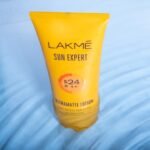Selecting the appropriate foundation is a crucial step in achieving a flawless makeup look. The foundation you choose should not only match your skin tone but also cater to your specific skin type. For instance, individuals with oily skin may benefit from a matte foundation that controls shine and minimizes the appearance of pores.
These formulations often contain oil-absorbing ingredients like silica or kaolin clay, which help to keep the skin looking fresh throughout the day. On the other hand, those with dry skin should opt for hydrating foundations that contain moisturizing agents such as hyaluronic acid or glycerin. These ingredients help to lock in moisture and provide a dewy finish, preventing the foundation from clinging to dry patches.
Combination skin can be particularly tricky, as it exhibits characteristics of both oily and dry skin. A foundation that offers a balanced finish, such as a satin or semi-matte formula, can work wonders for this skin type. Additionally, it’s essential to consider the undertones of your skin when selecting a foundation.
Foundations are typically categorized into three undertones: warm, cool, and neutral. Warm undertones often have a golden or yellow hue, while cool undertones lean towards pink or blue. Neutral undertones are a blend of both.
Testing foundations on your jawline in natural light can help you determine which shade and undertone work best for you.
Prepping Your Skin for Foundation Application
Before applying foundation, preparing your skin is vital to ensure a smooth and even application. The first step in this process is cleansing your face to remove any dirt, oil, or makeup residue. A gentle cleanser suited to your skin type will help create a clean canvas.
Following cleansing, it’s essential to exfoliate regularly, as this removes dead skin cells that can cause uneven texture and flakiness. However, exfoliation should be done with care; over-exfoliating can lead to irritation and sensitivity. Moisturizing is another critical step in prepping your skin for foundation.
A good moisturizer hydrates the skin and creates a barrier that helps the foundation adhere better. For oily skin types, a lightweight gel moisturizer may be ideal, while those with dry skin should opt for a richer cream. Additionally, applying a primer can enhance the longevity of your foundation.
Primers come in various formulations designed to address specific concerns, such as pore minimization or color correction. For example, a silicone-based primer can create a smooth surface for foundation application, while a hydrating primer can provide an extra boost of moisture for dry skin.
Applying Foundation with the Right Tools
The tools you use to apply foundation can significantly impact the final look of your makeup. Brushes, sponges, and fingers each offer unique benefits and can yield different finishes. Foundation brushes typically have dense bristles that allow for precise application and buildable coverage.
A flat-top kabuki brush is particularly effective for buffing foundation into the skin, creating an airbrushed effect. When using a brush, it’s essential to apply the foundation in circular motions to ensure even distribution. Makeup sponges have gained immense popularity due to their ability to create a seamless finish.
A damp sponge can help to blend foundation effortlessly into the skin while providing a natural glow. The bouncing motion used when applying foundation with a sponge allows for a lightweight application that doesn’t cake or settle into fine lines. For those who prefer a more hands-on approach, using fingers can also be effective.
The warmth of your fingers can help melt the product into the skin, providing a more natural look.
Blending Techniques for a Seamless Finish
Achieving a seamless finish with foundation requires effective blending techniques that cater to your chosen application method. When using a brush, it’s important to work in sections rather than applying foundation all over the face at once. Start with the center of the face—such as the forehead, nose, and chin—and blend outward towards the hairline and jawline.
This technique helps to avoid harsh lines and ensures that the foundation is evenly distributed. For those using a sponge, the stippling technique is highly effective. This involves gently bouncing the sponge on the skin to press the foundation into place without disturbing other products underneath.
It’s also beneficial to use a damp sponge, as this can help to sheer out heavier foundations for a more natural finish. Additionally, if you find that certain areas need extra coverage, you can apply more product directly onto those spots and blend it out gently with your sponge or brush.
Setting Your Foundation for Long-Lasting Coverage
Once your foundation is applied and blended seamlessly into your skin, setting it is crucial for ensuring longevity throughout the day. Setting powders are commonly used to lock in liquid foundations and prevent them from settling into fine lines or creasing. Translucent powders are particularly popular because they work on all skin tones without altering the color of your foundation.
Using a fluffy brush, lightly dust powder over areas prone to shine, such as the T-zone (forehead, nose, and chin), while avoiding overly powdering dry areas. For those who prefer a more dewy finish or have dry skin, setting sprays can be an excellent alternative or complement to powder. These sprays not only help to set makeup but also provide hydration and refreshment throughout the day.
When using a setting spray, hold it at arm’s length and mist it over your face in an “X” and “T” motion to ensure even coverage. This technique helps to lock in moisture while keeping your makeup intact.
Addressing Common Foundation Concerns for Mature Skin
Choosing the Right Foundation
One common concern is that foundations may settle into fine lines or accentuate wrinkles. To combat this issue, it’s essential to choose lightweight formulas that offer buildable coverage rather than heavy foundations that can cake on the skin. Look for foundations labeled as “anti-aging” or “hydrating,” which often contain ingredients like peptides or antioxidants that benefit mature skin.
Pre-Foundation Skincare
Another consideration is the importance of proper skincare before applying foundation on mature skin. Hydration is key; using a rich moisturizer or serum can plump up the skin and create a smoother surface for foundation application.
Application Techniques
Additionally, using a primer specifically designed for mature skin can help fill in fine lines and create an even canvas. When applying foundation, opt for techniques that emphasize blending rather than layering too much product in one area; this approach helps maintain a natural look while providing adequate coverage.
Foundation Tips for Youthful, Radiant Skin
For those seeking a youthful and radiant appearance through their foundation choice, several tips can enhance this effect significantly. First and foremost, selecting a luminous or dewy finish foundation can impart an instant glow to the complexion. These formulations often contain light-reflecting particles that catch the light beautifully, giving the skin an illuminated appearance without looking overly shiny.
In addition to choosing the right formula, incorporating skincare products that promote radiance is essential. A brightening serum or moisturizer containing vitamin C can enhance your natural glow before applying foundation. Furthermore, using highlighters strategically on high points of the face—such as cheekbones, brow bones, and down the bridge of the nose—can amplify that youthful radiance when layered over foundation.
Troubleshooting Foundation Application Issues
Even with careful preparation and application techniques, issues may arise during foundation application that require troubleshooting. One common problem is patchiness or uneven coverage, which can occur if the skin isn’t adequately prepped or if too much product is applied at once. To remedy this issue, consider using a hydrating mist or setting spray during application to keep the skin moist and allow for better blending.
Another frequent concern is oxidation, where foundation changes color after application due to exposure to air or body heat. To avoid this issue, always test foundations in natural light before purchasing and consider using products specifically designed to resist oxidation. If you notice your foundation oxidizing throughout the day, applying a primer with color-correcting properties can help maintain its original hue.
By understanding these various aspects of foundation application—from choosing the right product based on skin type to troubleshooting common issues—you can achieve a flawless complexion that enhances your natural beauty while addressing specific concerns effectively.









